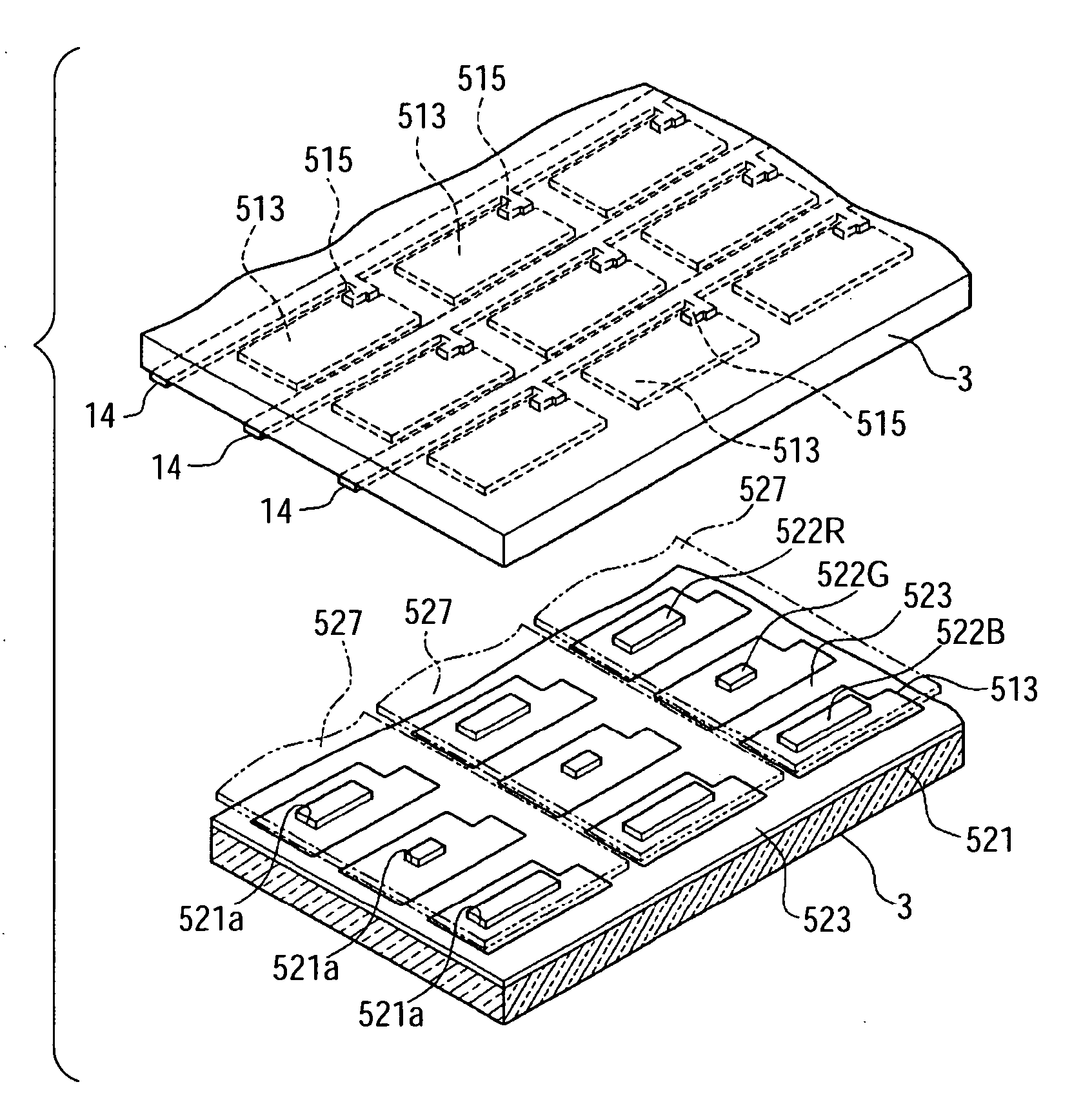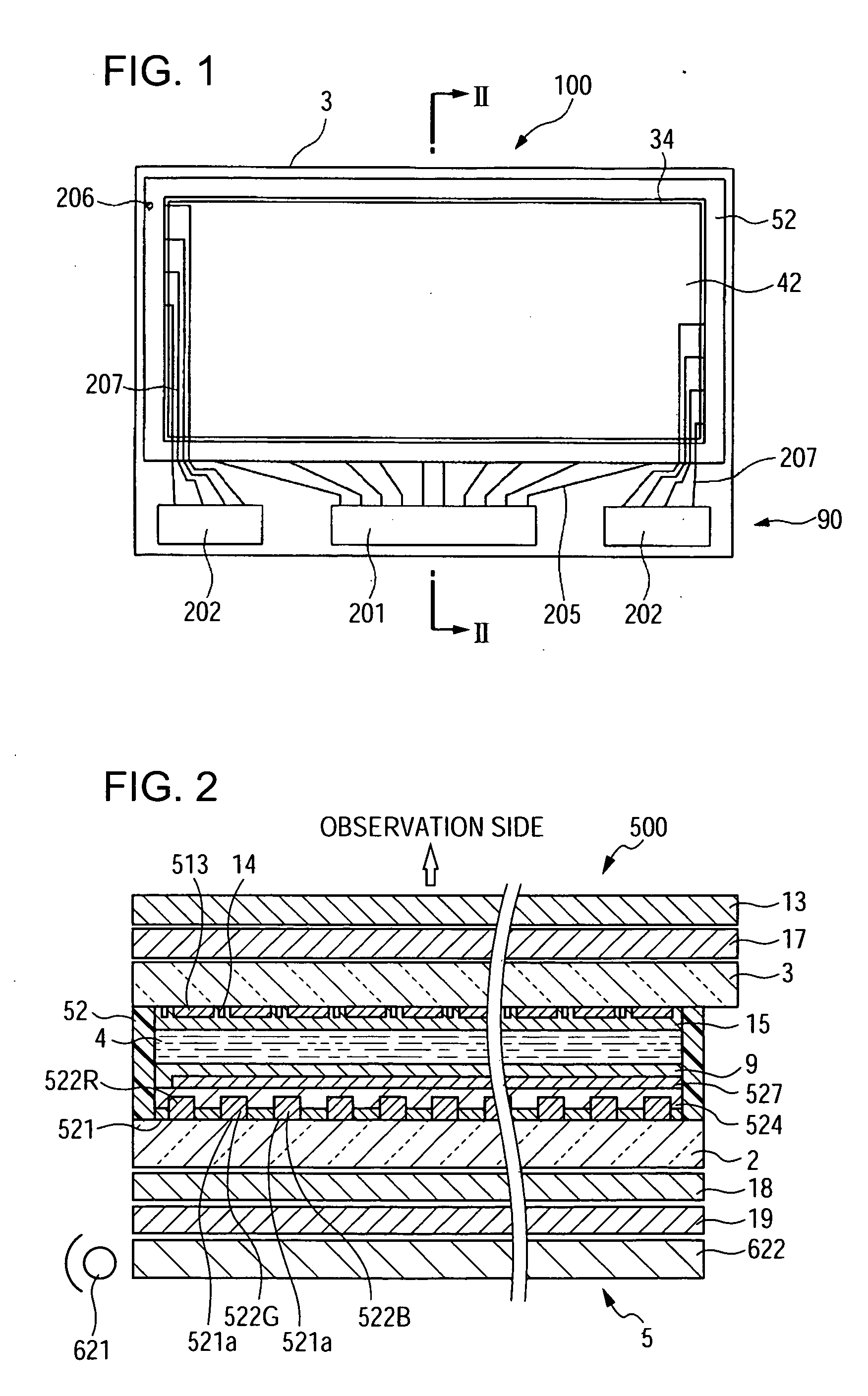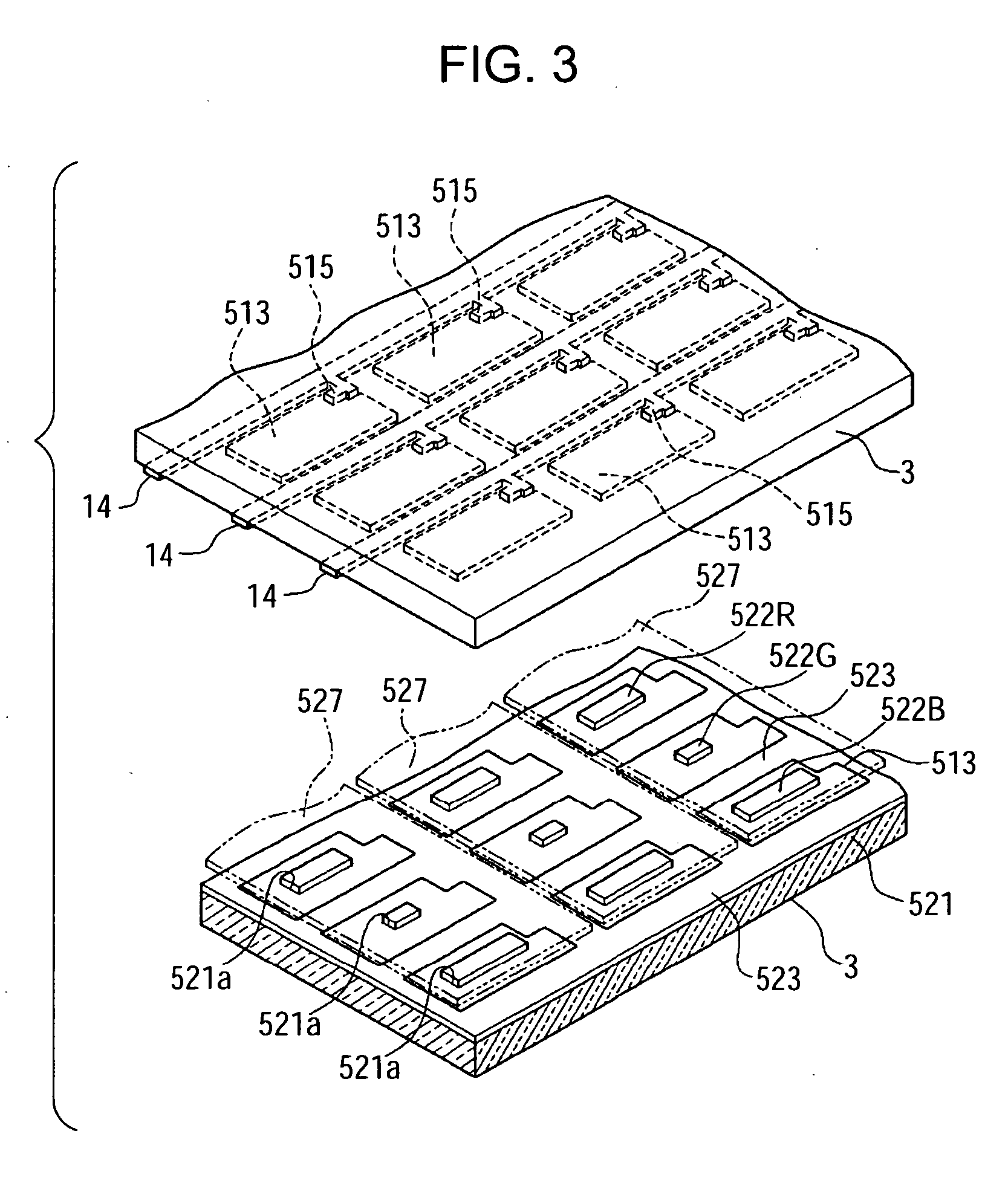Liquid crystal display device and electronic apparatus
a display device and liquid crystal technology, applied in static indicating devices, non-linear optics, instruments, etc., can solve the problems of deteriorating visibility of an observer in reflection mode, difficulty for users to view displayed characters and the like on display units in a dark place, lack of versatility, etc., to achieve the effect of improving visibility
- Summary
- Abstract
- Description
- Claims
- Application Information
AI Technical Summary
Benefits of technology
Problems solved by technology
Method used
Image
Examples
first embodiment
[0053] Now, a first embodiment of the invention will be described with reference to the drawings.
Electro-Optical Device
[0054]FIG. 1 is a plan view schematically illustrating the structure of a liquid crystal display device according to the first embodiment of the invention. The electro-optical device according to this embodiment is a transflective electro-optical device including a transmissive display mode in which incident light from a backlight (not shown) is transmitted to display images and a reflective display mode in which incident light from an observer side is reflected to display images. In addition, this embodiment employs an active-matrix-type liquid crystal display device using thin Film diodes (TFDs), which are non-linear elements of a two-terminal type, as switching elements.
[0055] As shown in FIG. 1, a liquid crystal display device 100 according to this embodiment includes a pair of a first substrate 3 and a second substrate 2 (not shown in FIG. 1) bonded by mean...
second embodiment
[0102] Next, a liquid crystal display device according to a second embodiment of the invention will be described with reference to the drawings.
[0103] The liquid crystal display device according to the second embodiment is different from that of the first embodiment in that the reflectance of the reflective layers 521 of the sub-pixels 551R, 551G, and 551B becomes different for the respective sub-pixel 551R, 551G, and 551B by changing an area of the black matrix 523 partitioning the sub-pixels 551. Except for this difference, the liquid crystal display device of the second embodiment has the same basic configuration as that of the first embodiment. In the second embodiment, the same elements as the first embodiment are denoted by the same reference numerals, and the description thereof will be omitted.
[0104]FIG. 6 is a plan view of a plurality of sub-pixels 551 arranged in a matrix on the second substrate 2.
[0105] As shown in FIG. 6, the sub-pixels 551R, 551G, and 551B are regula...
third embodiment
[0110] Next, a liquid crystal display device according to a third embodiment of the invention will be described with reference to the drawings.
[0111] The liquid crystal display device according to the third embodiment is different from that of the first embodiment in that the reflectance of the reflective layers 521 of the sub-pixels 551R, 551G, and 551B becomes different for each of the sub-pixels R, G and B by forming unevenness on the reflective layers 521 corresponding to the sub-pixels 551R, 551G, and 551B. Except for this difference, the liquid crystal display device of the third embodiment has the same basic configuration as that of the first embodiment. In the third embodiment, the same elements as the first embodiment are denoted by the same reference numerals, and the description thereof will be omitted.
[0112]FIG. 7 is a cross-sectional view of a plurality of sub-pixels 551 arranged in a matrix on the second substrate 2.
[0113] As shown in FIG. 7, the reflective regions ...
PUM
 Login to View More
Login to View More Abstract
Description
Claims
Application Information
 Login to View More
Login to View More - R&D
- Intellectual Property
- Life Sciences
- Materials
- Tech Scout
- Unparalleled Data Quality
- Higher Quality Content
- 60% Fewer Hallucinations
Browse by: Latest US Patents, China's latest patents, Technical Efficacy Thesaurus, Application Domain, Technology Topic, Popular Technical Reports.
© 2025 PatSnap. All rights reserved.Legal|Privacy policy|Modern Slavery Act Transparency Statement|Sitemap|About US| Contact US: help@patsnap.com



